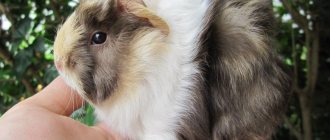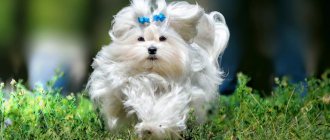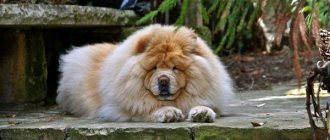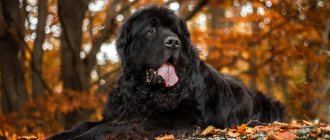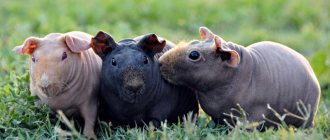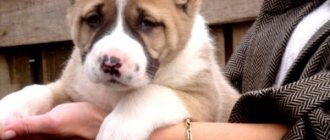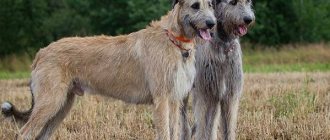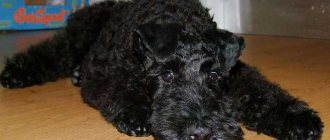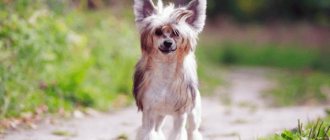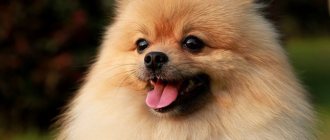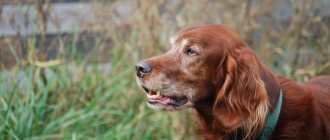Skinny is a mammal, a member of the pig family. The history of the appearance of the animal begins with the crossing of two species: the Hartley and the hairless guinea pig. Scientists were unhappy with the result of this process, since the animals had low immunity. That is why they crossed this breed with Selfies, getting Skinny. This happened in the 70s of the last century.
History of the breed
The Skinny breed, which is what this variety of overseas piglets is called, is experimental. For many years, a group of Canadian scientists led by Charles Rivers conducted breeding experiments in their laboratory, trying to create something new and unusual.
It must be said that their efforts were not in vain. As a result of many years of painstaking work, a unique breed of guinea pigs was born. It was presented to the court in 1976, but until now American breeders are not going to recognize “aliens” as a separate nosological entity.
At the very beginning of the formation of the breed, all representatives were albinos with red eyes. But over time, pets were obtained with more attractive colors (brown, black, pink) and with less frightening pupils.
Today, breeding work continues. Their goal is to obtain strong livestock with a good gene pool - after all, skinnies are not characterized by excellent health due to frequent inbreeding.
It is not entirely clear where this name for the breed came from. Skinny literally means “bones covered with skin.” It’s a stretch to call pets skinny (as you can see in the photo), but they don’t argue with scientists.
It must be said that the “bald” gene is recessive. What does it mean? Trying to crossbreed a hairless pet with hairier animals will result in an exclusively “woolly” litter. Moreover, the latter will carry the gene for “hairlessness” and, under certain conditions, are capable of producing cute naked babies.
Skinnies are not the only ones of their kind. There is another type of hairless rodent - the Baldwin, which is often called the “Sphynx guinea pig” (by analogy with the same hairless cats). The second population is much younger - no more than 20 years old - and appeared as a result of a natural mutation that breeders tried to fix.
Where does skinny live?
Photo: Skinny at home
These adorable looking hairless pigs can never be found in the wild because they are the result of experiments carried out in a laboratory. These cute little creatures are actually genetic mutations that were first created in 1978 in the laboratories of the Armand Frappier Institute, which is located in Montreal, Canada.
Since skinnies do not have fur, they should be kept indoors in a warm environment. Because they don't have fur, which naturally keeps them warm in cold weather, skinnies get colds or even hypothermia very easily. You need to make sure that they live in an area that is comfortable and warm so that they never feel cold.
During the hot summer months, you have to be careful not to let your skinny skin tan. So if you take them outside, you'll need to make sure you apply some sunscreen to their body and face, and be especially careful not to get it on your pet's eyes.
Being such funny, inquisitive little creatures and so friendly, skinnies are making their mark on the animal kingdom thanks to their owners who have now settled in many parts of the country. Because skinnies must live indoors, they truly become part of the family, much like a cat or dog. Since there is no fur on their body, every little detail about them is highlighted, and this includes any markings where fur would grow. However, Skinnies do have some hair on their nose and paws, but other than these areas they are completely hairless from birth.
Description of the breed
Externally, the two breeds are very similar, the differences are visible only to professionals, so it makes no sense to dwell in detail on the description of each species separately.
Any sane person would assume that if a guinea pig is naked, it means it has no hair. But this is not an entirely correct statement. In fact, the entire surface of the animal’s body is covered with barely noticeable fluff. There is slight hairiness in the area of the head, neck and shoulders - this sign only applies to the skinny breed.
Baldwin's skin is wrinkled and feels like soft and warm rubber. Owners of skinnies compare their pets’ bodies to delicate velor fabric.
Many people classify hairless pets as hypoallergenic breeds, which is great news for people who are allergic to animal dander.
Large blunt head. The ears are set wide apart, point down and have a shaped edge. The eyes are large, round and slightly convex, the color matches the suit. The neck is short and wrinkled.
The body is muscular. The fingers are very mobile; the rodent uses them to hold the treat. The belly is rounded. In general, the pet resembles a kind of ball. The tail is very short and almost invisible.
Appearance
The body length of the animal is about 35 cm. Sexual dimorphism is expressed in size: females are much smaller. An adult usually weighs 1 kg. At first glance, the pig seems bald, but its skin is covered with thin fluff. Small hairs can be seen on the neck and head. The pig's eyes are expressive; they can be red and brown, black and burgundy. The animal's ears are round in shape. The neck is stocky and muscular, just like Skinny's body. But despite this, the mammal has a rounded tummy. The mammal's tail is short and inconspicuous. Its color can vary from white to piebald.
Arrangement of the house
For a home, it is better to use a large terrarium with a usable area of at least 0.5 square meters. m. In principle, the kids will feel good in a regular aquarium.
A deep plastic tray must be placed at the bottom of the dwelling, while the side walls must be made of transparent material so that the animal can observe its surroundings.
Sawdust is best suited as bedding. It is not recommended to use wood filler for these purposes - the sharp edges of the granules will injure the paws and delicate skin of babies.
The house is placed on a small hill away from drafts and passages. This will protect the baby from hypothermia, to which the animal is very sensitive.
Be sure to ensure that the rodent cannot get out of the terrarium on its own. The fact is that after a fall, pets do not live long due to the injuries they receive. The most common injuries are:
- intestinal rupture,
- bruises of internal organs,
- limb fractures.
To prevent this from happening, the top of the apartment is securely covered with a net or the sides of the cage must be high enough.
In addition to feeders and drinking bowls, the terrarium is additionally equipped with houses made of cardboard, plastic or wood, toys are also placed there, and tunnels and manholes are equipped.
All these accessories will make your pet's life bright and varied.
Behavior
Skinnies do not conflict with other pets. They are emotionally sensitive, quickly become attached to kittens, birds, puppies, and try to cuddle with them. They seek affection from their owners. They can sit on their knees for a long time. They love it when a warm hand is placed on their back.
The rodent does not bite, is very inquisitive and active.
If the animal is healthy and well-fed, it is not dangerous for small children.
Pigs are chosen as gifts for children as the most socialized and contactable pets.
Content Features
The absence of hair requires appropriate care for rodents.
- Firstly, they are afraid of the cold, so the optimal temperature for a comfortable life is considered to be no lower than 22 °C.
- Secondly, they require two to three times more food than their hairy counterparts. This is explained simply: maintaining normal body temperature (38 °C) requires increased metabolism, and therefore more energy.
- Thirdly, bare fur should be periodically lubricated with baby cream to prevent dryness and flaking.
Otherwise, the content will not differ from that of the most ordinary guinea pigs.
Experienced breeders of “balds” do not recommend bathing them at all. Occasionally, the skin is wiped with damp wipes; in extreme cases, heavily contaminated areas are treated with baby or special shampoo.
Do not forget about trimming their nails - they, like all overseas animals, grow very quickly.
It is believed that hairless guinea pigs are not smelly, but you still shouldn’t bother with cleaning - the more often you clean the terrarium, the less likely it is that an unpleasant odor will appear. Cleaning is carried out every three to four days: the tray is washed and the raw sawdust is completely replaced with fresh and dry ones. Periodically (at least once every two weeks) the house and all accessories are disinfected.
Cost of hairless guinea pigs
Due to the difficulty of breeding and the rather rare litters of hairless cubs, this breed has a higher cost than classic individuals.
The cost of this cute animal varies from four to nine thousand rubles, depending on the breed, color and breeder from whom you will purchase it. Naturally, buying it from experienced breeders will be more expensive than from ordinary owners. Bicolor animals with unusual colors also have a high price.
Feeding rules
It was already mentioned above about increased metabolism and more abundant feeding. But still, you shouldn’t go to extremes - overfeeding will definitely lead to obesity.
According to feeding standards, the diet of small “sphinxes” should have the following proportions:
- 60% - grass in summer or forb hay in winter;
- 20% - root and tuber crops and other vegetables;
- 20% - grain feed (oats, peas, barley, etc.).
Instead of the grain component, you can use ready-made balanced super-premium or premium food.
Additionally, pets are given vitamins, feed additives with macro- and microelements, a little regular salt and chalk. In addition, do not forget about adding ascorbic acid to the water; it is especially important to fulfill this condition in winter, when there is little green food in the diet - natural sources of vitamin C.
It is always worth remembering to drink water. It must always be fresh, clean and freely available. Change it twice a day (or more often).
A branch of a fruit tree should always be present in the terrarium. Pets grind their sharp teeth on it.
Important!
- Guinea pigs should not be fed garlic, radishes, nightshades or mushrooms!
- You should not go on a hunger strike: lack of food for two days will certainly lead to the inevitable death of your pet!
Breeding
To get offspring from a skinny, you need to get a mate for your animal. Organize comfortable living conditions and nutritious meals. Breeding skinny pigs is a simple task.
At 6–8 months, the female is ready to continue the race. Males become sexually mature starting at three months. However, the optimal age for producing offspring is six months for females and 7 months for males.
Pregnancy lasts about 70 days. Throughout this period, the female must be carefully protected from stress and well fed.
Character
Calm, affectionate, friendly and intelligent animals. Many people consider them fidgety, but what would they do without it? After all, life is movement.
Rodents are diurnal, so they will not disturb their owners during their night rest. Even while awake they behave quietly and meekly.
One of those few “pigs” who demand attention to their person. If owners do not have the time or opportunity to communicate with a pig, be sure to get a couple of animals. Otherwise, the poor fellow will suffer from melancholy and loneliness.
Reproduction
This question will not cause any difficulties for anyone, since there is no need to create special conditions for breeding hairless guinea pigs.
Sexual maturity occurs in females at 2-2.5 months, and in males at 3 months. But it’s not worth giving birth to pets so early: the body is not yet fully formed and pregnancy can be difficult. The optimal age for breeding is 6 months of age.
During gestation, the female is provided with adequate feeding, but not overfed! Vitamin E, B and others are introduced into the diet.
After the birth of the offspring, the female needs to rest from childbirth and pregnancy for at least six months before mating with the male again.
Skinnies, like Baldwins, are ideal pets that will not let their owners get bored. Their lack of hair makes them look good compared to other guinea pigs. This point is especially important for allergy sufferers, for whom hairless pets are unlikely to cause an asthma attack.
Lifestyle
This guinea pig is a social animal. It gets along well with its relatives and other pets. In general, they are friendly and rarely anything can cause them aggression. Sometimes animals bite their owners when they want to bite themselves. This behavior indicates that Skinny has fleas. But it is not always the case. A pig may chew or bite while in its owner's arms when it wants to urinate.
This mammal is easy to tame. At first the animal may be nervous, but then, if it feels love, it will begin to trust.
